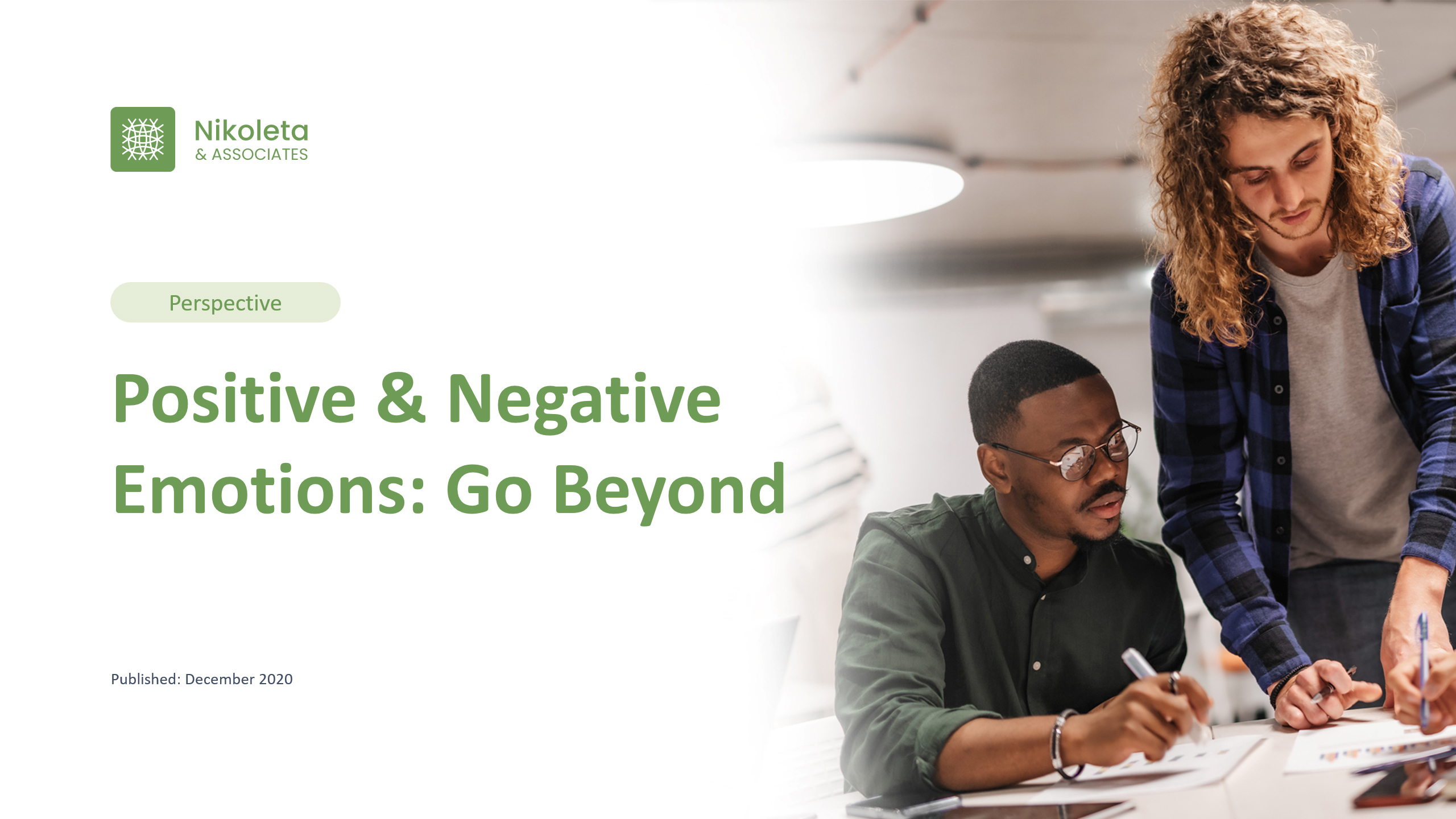Perspective
Positive & Negative Emotions: Go Beyond


We can either let our emotions burn down our homes or light our fires; the choice is ours.
Why does this matter in business? Simply put, where there’s business, there are people, and where there are people, there are emotions.
Emotions can feel good or bad. They can propel us forward or keep us stuck in the same place for many years. We often base our decisions primarily on our emotions, despite a significant portion of our emotional understanding remaining hidden. Understanding our own emotions better also helps us recognize them in others and judge less.
In our work with Nikoleta & Associates, we’ve noticed a surprising lack of understanding around how much people’s emotional worlds influence their work. Readers might question how we can assert such a lack of understanding given the widespread familiarity with concepts like emotional intelligence and emotional labour.
Herein lies the crux: concepts. Emotion and intelligence fundamentally do not belong in the same sentence. Certainly, intellectualizing emotions is a start; it makes them somewhat accessible, at least abstractly. However, emotions are never fully accessible until experienced in their raw form – felt, not thought about.
Our understanding of emotions is a layered topic, and the reasons why much of our emotional experience remains elusive are equally layered. For this perspective, we’ll explore a few dimensions, including our time and emotional time perspectives.
Our current frames
A significant misunderstanding that restricts us is that we often categorize our emotions as either positive (happy, excited) or negative (angry, fearful). This framework tends to create a cycle based on feeling good and avoiding not feeling good – the oft-mentioned emotional rollercoaster. We thus build our lives around pursuing pleasure and avoiding pain.
Our cultural and societal norms reflect these beliefs. Since cultural norms guide our behaviour, we feel good when we adhere to them and bad when we don’t. These norms often require us to suppress or hide our emotions. As a species, we’ve designated what’s good and bad, socially acceptable and unacceptable.
It’s time to upgrade our frames.
Make room for the negative
When an unpleasant emotion arises, it won’t harm us, so there’s no need to suppress it. Instead of viewing our emotions as painful experiences to be avoided – which puts us in direct conflict with them – we should see our emotions as providing valuable feedback about our current state. Consider a common story of a colleague expressing anger and frustration during organizational change. We often infer that the person isn’t coping well based on their levels of anger and frustration.
A clear reason we avoid negative emotions is the often ensuing hostility (either direct or indirect). We elaborate on this in our Sarcasm perspective. While hostility is a topic worth discussing in itself, it’s important to remember that hostility doesn’t necessarily accompany anger; that’s up to us.
Emotion plus understanding, hesitance plus courage, discomfort plus vision – these paradoxes, once embraced, can bring us closer to the truth of the situation. Some aspects may be pleasant, some may not be, but regardless, clarity will result, enabling understanding and informed action.
Unpleasant emotions and teams
Our lack of understanding often labels charged, specifically negative emotions as unwelcome and indicative of something being wrong. But something isn’t necessarily wrong; something is ripe for understanding and exploration.
Consider the concept of ‘growing pains’, often heard in startup and new venture contexts. This human experience inherently involves excitement, frustration, and prolonged periods of uncertainty. We often refer to these as “good problems to have,” but why are they problems at all?
When unpleasant emotions arise, they’re signalling that something isn’t as it should be. There’s work for us to do, but the emotion itself isn’t bad. The more teams understand this – both within themselves and how it manifests in team experiences – the better they’ll be able to see things for what they are. Rather than becoming emotionally hijacked, they’ll approach the truth and determine what needs to be done to move forward together.
Leadership awareness
Our best choices are those made with the most awareness we have at the time.
Labelling emotions as positive or negative doesn’t capture the richness of our emotional lives. It doesn’t help us find what will liberate us – the truth within us and the situation we’re dealing with.
Understanding this is a game-changer. Seeing anger and frustration as pathways to previously unknown information can open up a host of benefits. Facilitating this learning is vital for sustainable performance at all levels and contributes actively to a learning and growth-supportive context.
Ultimately, businesses that choose to trust their people and view them as creators rather than executors, as gifts rather than resources to extract work from, will recognize the value of engaging the discomfort that comes from all emotional spaces. They will learn to harness it, not avoid it.















